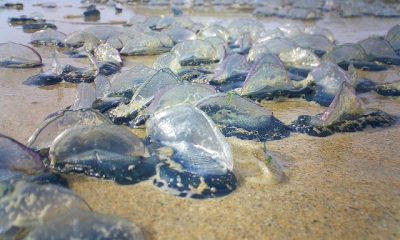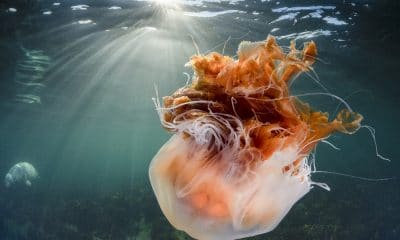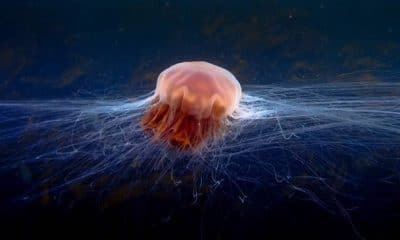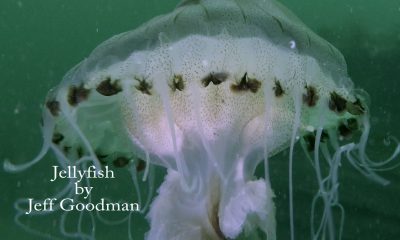News
Scientists investigate global spread of stinging jellyfish
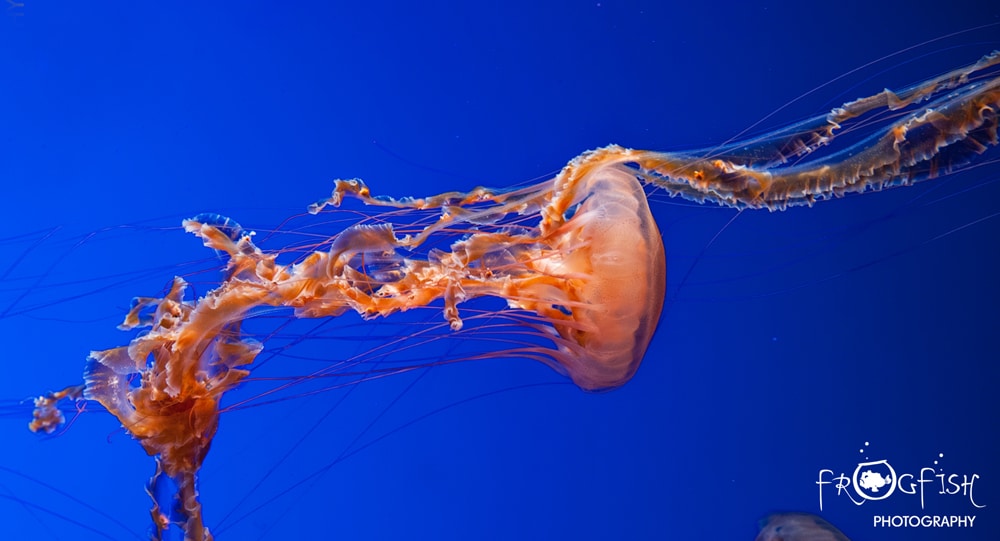
“Get it off of me! Get it off of me!” shrieked Mary Carman, a marine ecologist at Woods Hole Oceanographic Institution (WHOI) as she flailed knee deep in the bath-like water of Farm Pond on Martha’s Vineyard.
She was observing tunicates (also known as sea squirts) in the quiet coastal pond, garbed in a full wetsuit and snorkeling gear as she hovered through the shallow grassy water. She was well covered except for parts of her face, including her lips which became a landing spot for a clinging, stinging jelly.
“The sting was one of the most painful things I’ve experienced in my life—I liken it to being injected by five hypodermic needles simultaneously,” she said.
Despite the ensuing pain and “two days of nausea,” Carman has been back in Farm Pond on several occasions. But instead of looking at tunicates, she’s been collecting samples of the toxic jellies, scientifically known as Gonionemus sp. In the past several years, she, along with WHOI biologist Annette Govindarajan and their colleagues, has been tracking these clinging jellyfish which, according to a new study, appear to be expanding throughout the Cape and Islands region.
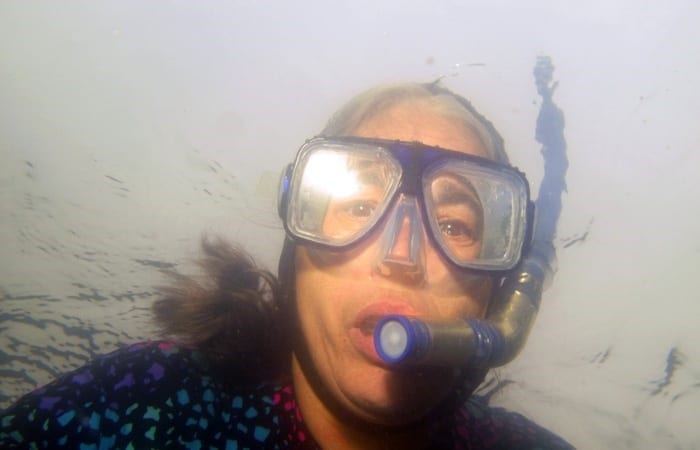
Secret hitchhikers
The toxic invader looks like a clear, medium-sized coat button collared with several dozen threadlike tentacles. The tentacles sport adhesive-like pads that allow the animal to stick to eelgrass, seaweeds—and yes, lips too—before emitting venomous neurotoxins that can cause extreme pain, breathing difficulties, and blisters. Their origin is unclear. The jellyfish were abundant in a few New England locations, including Eel Pond in Woods Hole, Mass. in the late 1800s until about 1930, when they all but disappeared after a slime mold decimated most of the region’s eelgrass. Carman and Govindarajan are unaware of any regional reports of stings during this period, although stings had been reported from the Sea of Japan.
The jellies resurged on Cape Cod in the 1990s, with the first documented sting report occurring in 1990 in Waquoit Bay. The first documented Martha’s Vineyard sting occurred in 2006 and it appears that the population has been expanding there ever since. According to the study, in one of the newly colonized sites (Edgartown Great Pond), jellyfish were clustered in a cove with a public boat ramp, suggesting that transport on boat hulls could be promoting their distribution around the island. “The jellyfish have life cycle stages that can be less than a millimeter in size and that adhere to surfaces, so they could very easily be hitchhiking on boats without being seen,” said Govindarajan.
The study points to another factor possibly contributing to the spread: cloning. This particular species is known to have the ability to make multiple copies of itself during various stages of asexual reproduction. “As we analyzed the sex ratio of our samples, we discovered that all of the jellies collected at Edgartown Great Pond were male,” said Govindarajan. “This is consistent with the possibility that this particular population is clonal, and that asexual reproduction is contributing to their spread. But we need more information on the dynamics of these stages, such as how long they can persist and what factors trigger them to produce jellyfish.”
Across the pond
According to the researchers, the toxic jelly outbreak isn’t just a local phenomenon: the animals have been found along the coasts of Russia, Japan, China, the Mediterranean, Argentina, and most recently, along Sweden’s rocky west coast, where just last summer, a number of bathers were stung. That outbreak was documented in another study in which Govindarajan and colleagues from Sweden compared DNA sequences of clinging jellies collected at the site with those found along the US East Coast and other parts of the world, and discovered some genetic similarities.
“We found some common genetic variants occurring in disparate locations where stings have been reported,” said Govindarajan. “We’re not sure what’s triggering these toxic outbreaks – multiple factors may be at play, but human-mediated transport of the tiny, cryptic life stages may have a role globally as well as locally.”
Björn Källström, a marine biologist at Gothenburg Marine Biological Laboratory and co-author of the study, says underwater photographers have observed clinging jellies in Sweden in the past, but last summer marked the first time that people there reported being stung.
“One factor may have been the really hot and dry summer we had last year, which caused water temperatures at the site to surge 3°C above seasonal averages,” he said. “Previous studies have suggested that when ocean temperatures are warmer, clinging jellyfish production is triggered. And when they increase in numbers, more people are likely to encounter and get stung by them.”
Avoiding hot spots
With a host of possible factors at play—anthropogenic transport, warmer ocean temperatures, and the comeback of eelgrass—Govindarajan, Carman, and their international colleagues plan to continue studying the stinging creatures to better understand the intricacies of the spread.
Källström feels that in the near term, the research can help bathers avoid areas where the jellies are likely to disperse.
“Climatologist have predicted another hot, dry summer in Sweden, which means that we could see another outbreak over the next few months,” he said. “And this time, we suspect it may spread to other locations along the coast. So, we’ll be developing models to help predict where the jellies may go, so people know which areas to stay away from.”
Govindarajan agrees. “The more we can learn about how they’re expanding and the types of conditions the jellies are thriving in, the more we’ll be able to identify where the hot spots are and educate the public.”
Gonvindarajan says the community can also help the monitoring effort by reporting sightings of clinging jellies to jellyfish@whoi.edu—although she cautions people to be careful, and to not handle the jellies.
For more information about the work of WHOI please visit their website by clicking here.
News
Dive Worldwide Announces Bite-Back as its Charity of the Year

Over the next 12 months, specialist scuba holiday company Dive Worldwide will be supporting Bite-Back Shark & Marine Conservation with donations collected from client bookings to any one of its stunning dive destinations around the world. The independently-owned operator expects to raise £3000 for the UK charity.
Manager at Dive Worldwide, Phil North, said: “We’re especially excited to work with Bite-Back and support its intelligent, creative and results-driven campaigns to end the UK trade in shark products and prompt a change in attitudes to the ocean’s most maligned inhabitant.”
Bite-Back is running campaigns to hold the media to account on the way it reports shark news along with a brand new nationwide education programme. Last year the charity was credited for spearheading a UK ban on the import and export of shark fins.
Campaign director at Bite-Back, Graham Buckingham, said: “We’re enormously grateful to Dive Worldwide for choosing to support Bite-Back. The company’s commitment to conservation helps set it apart from other tour operators and we’re certain its clients admire and respect that policy. For us, the affiliation is huge and helps us look to the future with confidence we can deliver against key conservation programmes.”
To launch the fundraising initiative, Phil North presented Graham Buckingham with a cheque for £1,000.
Visit Dive Worldwide to discover its diverse range of international scuba adventures and visit Bite-Back to learn more about the charity’s campaigns.
MORE INFORMATION
Call Graham Buckingham on 07810 454 266 or email graham@bite-back.com
Gear News
Scubapro Free Octopus Promotion 2024
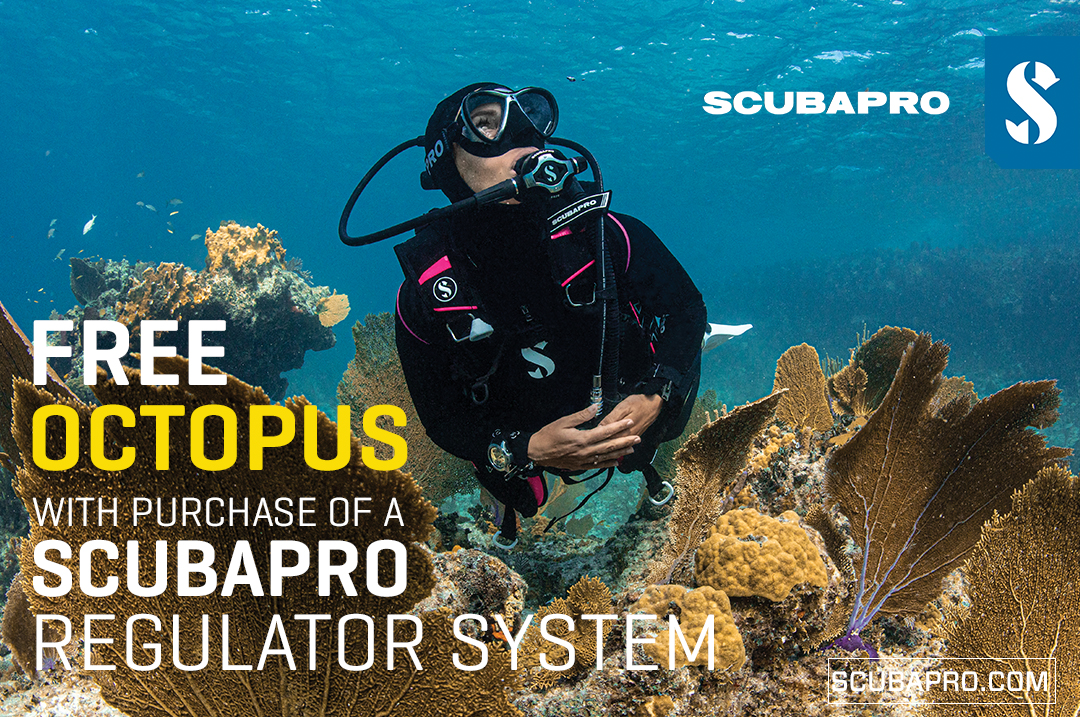
Free Octopus with every purchase of a SCUBAPRO regulator system
Just in time for the spring season, divers can save money with the FREE OCTOPUS SPRING PROMOTION! Until July 31st SCUBAPRO offers an Octopus for free
with every purchase of a regulator system!
Get a free S270 OCTOPUS with purchase of these combinations:
MK25 EVO or MK19 EVO with A700
MK25 EVO or MK19 EVO with S620Ti
MK25 EVO or MK19 EVO with D420
MK25 EVO Din mit S620Ti-X
Get a free R105 OCTOPUS with purchase of the following combinations:
MK25 EVO or MK19 EVO with G260
MK25 EVO or MK17 EVO with S600
SCUBAPRO offers a 30-year first owner warranty on all regulators, with a revision period of two years or 100 dives. All SCUBAPRO regulators are of course certified according to the new European test standard EN250-2014.
Available at participating SCUBAPRO dealers. Promotion may not be available in all regions. Find an authorized SCUBAPRO Dealer at scubapro.com.
More information available on www.scubapro.com.
-
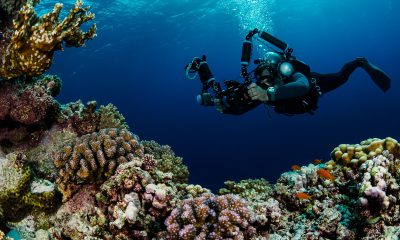
 News3 months ago
News3 months agoHone your underwater photography skills with Alphamarine Photography at Red Sea Diving Safari in March
-

 News3 months ago
News3 months agoCapturing Critters in Lembeh Underwater Photography Workshop 2024: Event Roundup
-
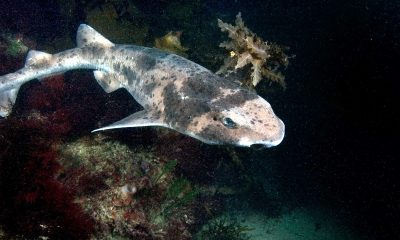
 Marine Life & Conservation Blogs3 months ago
Marine Life & Conservation Blogs3 months agoCreature Feature: Swell Sharks
-

 Blogs2 months ago
Blogs2 months agoMurex Resorts: Passport to Paradise!
-
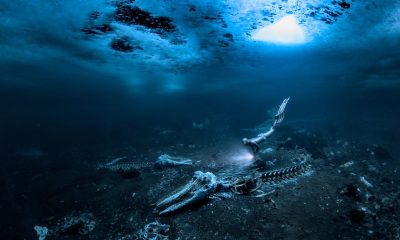
 Blogs2 months ago
Blogs2 months agoDiver Discovering Whale Skeletons Beneath Ice Judged World’s Best Underwater Photograph
-
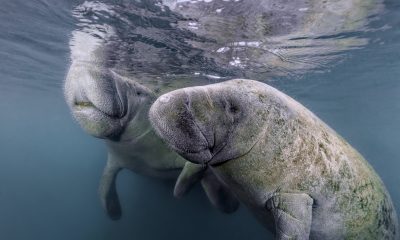
 Marine Life & Conservation2 months ago
Marine Life & Conservation2 months agoSave the Manatee Club launches brand new webcams at Silver Springs State Park, Florida
-

 Gear Reviews3 months ago
Gear Reviews3 months agoGear Review: Oceanic+ Dive Housing for iPhone
-
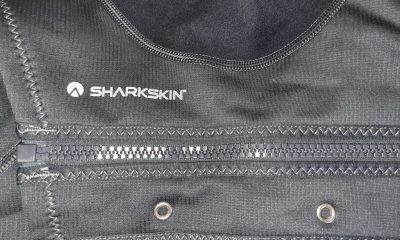
 Gear Reviews2 weeks ago
Gear Reviews2 weeks agoGEAR REVIEW – Revolutionising Diving Comfort: The Sharkskin T2 Chillproof Suit



